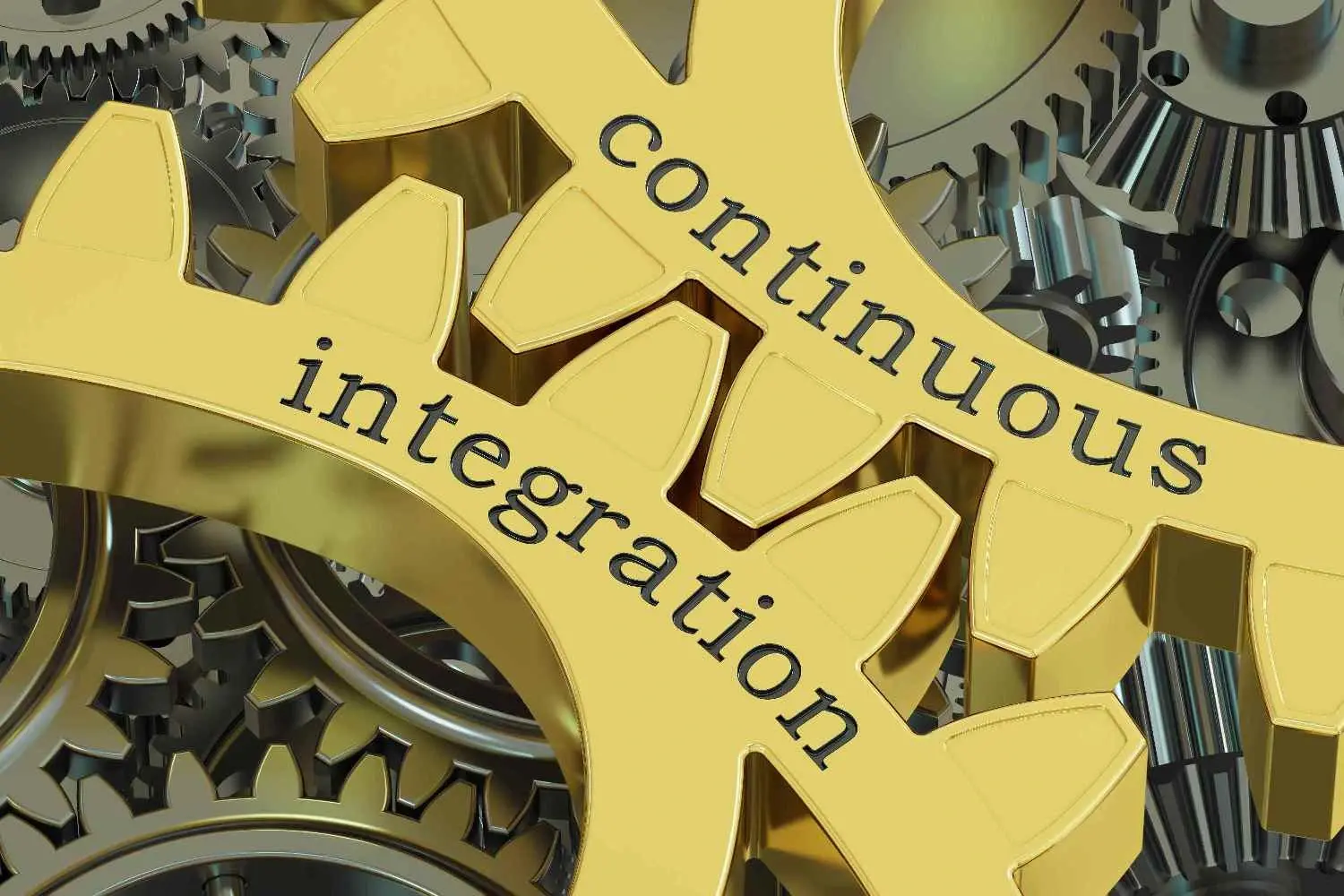How can we make software faster, safer, and more efficient?
A productive team is advantageous to every business, and a system that ensures productivity is a way to drive the development team to deliver efficient software.
Continuous Integration (CI) and Continuous Delivery (CD) are two practices that are closely linked but separate in modern software development.
They involve a series of steps performed to automate the software development and delivery processes, from code integration to production deployment.
Continuous integration and delivery are independent concepts combined into a single pipeline to automate the software development lifecycle.
In this article, you’ll learn about continuous integration and delivery as separate concepts and how they relate.
What is CI/CD?
Continuous integration and continuous delivery are practices in a software development lifecycle created to automate the process of building, testing, and delivering software, making it faster, safer, and more efficient.
The orthodox way of deploying an application involves many stages, which may include:
The Development Phase: The development phase involves writing the code for the application. The code is then integrated into version control software, such as Git, to store the application code on Github or Gitlab.
The Code Compilation Phase: This is when code is compiled to create a build, and source code is transformed into a format that can be executed by the system where the application would run.
The Testing Phase: This is where the application is tested to ensure that everything is working as it should.
The Deployment Phase: This is where we set up a server responsible for replicating the production environment. The application is displayed in the staging server and tested to see if everything works before deploying it to the production environment.
After deployment, continuous monitoring and testing of the application are necessary in case of errors, and if errors arise, a manual rollback to the previous version would be done to address and fix them.
Continuous Integration, Continuous Delivery, and Continuous Deployment are the practices that make up Continuous Integration and Delivery (CI/CD) in software development and delivery.
Let’s break down these concepts individually;
What is Continuous Integration?

Continuous integration is a process in the CI/CD pipeline that involves automating the integration of code changes from various contributors into a single software project.
This way, developers can merge their code into a central repository system where they can build, test, and run their applications.
This practice of CI requires that developers merge their code or changes into the repositories main branch many times per day, activating an automated build (compiling and assembling of source code) and test sequence to produce deployable software.
If the build fails, the CI system stops it from moving to the next stage which is often the deployment stage. The team would receive a report or notification that includes information that helps them identify issues. Repairs are then quickly made to fix the errors.
Continuous integration involves certain activities that are necessary for deployable software. e.g.
Frequent commits to a single source code repository
Automated builds
Automated tests
Reporting and Feedback
Continuous review and adjustments
What is Continuous Delivery?
A continuous integration process and continuous delivery process are often integrated.
Continuous delivery is a process in the CI/CD pipeline that involves code compilation.
We can create the build and test it out to ensure that the software is ready to be released for use. It is possible to bypass continuous delivery; however, it is safer to go through the CD pipeline for many reasons, to mention a few:
The continuous delivery pipeline manages the versioning of releases and provides the ability to roll back to previous versions when issues occur.
Continuous delivery manages audits and documentation of each release, including what was deployed and when.
Continuous delivery involves additional steps, e.g. staging, user acceptance testing, intended to determine whether the software is useful, etc.
What is Continuous Deployment?

Continuous deployment is the process where code updates or changes made to an application are pushed automatically to the production environment.
For this to happen, tests are predefined to drive automation; therefore, when new updates or changes pass these tests, the system automatically pushes updates to the software.
Benefits of Continuous deployment include:
Continuous deployment Improves code quality.
Continuous deployment accelerates product development.
Continuous deployment’s automated tests catch bugs and errors early in the development pipeline.
Differences between Continuous Delivery and Continuous Deployment
Continuous delivery and continuous deployment are closely related but involve two different practices to push changes or frequent releases to software.
Continuous delivery is not only about pushing changes to production continuously; the aim is to ensure that our software is always in a releasable state.
A software release is always planned, and a target date is usually set for the release to happen. Before the set date, everyone organizes their work to make sure it’s ready to be released. For example, making sure features are ready and tests have been performed, etc.
The approach of ensuring that code is releasable ensures that the software is free of critical issues, therefore delivering a smoother release. Regardless of whether all features are ready, the ready features can be released and delivered right away, thereby minimizing delays.
Continuous deployment is the process of releasing changes to production only when they pass the automated tests and checks. It is considered to be an extension of continuous delivery. In a nutshell, continuous delivery leads to continuous deployment.
Note:
In continuous integration, team members merge changes at least once per day. Meaning that team members should produce something ready for release daily. This forces team members to work in small steps; after each step, software is checked to see if it’s releasable. This pattern makes it easier to identify and rectify errors promptly.
Stages in CI - CD Pipeline

The different stages in the CI/CD pipeline include:
The Source Stage: This stage is also called the version control stage. It entails the management and storage of source code in an orderly manner. When code is created or updated on the developer's machine, the developer pushes it to a version control system, e.g., Git, to ensure that every update or modification made to the code is tracked properly, which makes it easy to retrieve or be restored.
Team members can work on code separately without disrupting each other or the main code base. When a commit is made to the version control repository, the CI/CD pipeline is triggered.
This stage may also include quality checks and syntax checks to ensure that the code adheres to predefined standards and styles, which include formatting and coding conventions for consistency and readability.
The Build Stage: In this stage, the source code is transformed and executed within a designated environment. This stage is where the system handles transpiling languages, resolving dependencies, building assets, and overall generating files for the application to run. Also, quality checks, such as static code analysis and unit testing, are crucial aspects of the build stage. This is so that issues are detected and addressed promptly.
Testing Stage: During this stage, the application goes through an automated test to ensure that it meets all requirements. Examples of these steps are:
Integration Test: Focuses on validating interactions between different components of the application, ensuring they all work seamlessly.
Functionality Test: This test focuses on the end user perspective or tests the functional aspect of the application, e.g. correctness, reliability, usability, etc.
Performance Test: This test ensures that the application performs well based on certain conditions, e.g. speed, responsiveness, etc.
Security Test: Identifies potential security risks or vulnerabilities within the application.
Deployment Stage: This is the final stage of the CI/CD pipeline. This is where the application is released into the production environment, becoming accessible for end users to utilize. Deployment is dependent on several factors that determine how it is carried out. E.g. application type, deployment environment, technology stack, etc. After deployment, the application is monitored closely to ensure that it’s running smoothly in the production environment. Monitoring tools can be used to track performance and detect anomalies.
Benefits of CI / CD Pipeline
There are several advantages of the CI / CD pipeline for modern software development and they include:
Quality Software: CI/CD pipelines help automate testing, which results in high code quality. Bugs are detected on time during the development process before going to production.
Less Risk: The CI-CD pipeline requires that smaller changes are pushed; this means that when simpler or smaller changes are made, mistakes are easier to spot and fix.
Quick Deployment: Automating software development reduces manual work. The CI/ CD pipeline enables us to ship code changes frequently, which means we can release software to production at a fast pace.
Seamless Collaboration: Team members can work on different parts of a project simultaneously because the CI-CD pipeline will integrate changes seamlessly.
Productivity: CI-CD automates repetitive tasks; therefore, team members can focus on more productive work. Also, time spent on manual testing or debugging is reduced, significantly saving time and effort.
Less Cost: The process of CI-CD reduces the need to perform certain tasks manually, reduces error, and overall saves time and cost. For instance, it reduces costs related to downtime, allowing reliable updates and rollbacks This also gives developers time to focus on more tasks.
Better Code Visibility: The practice of CI/CD pipelines to automate testing has improved visibility across the software development life cycle. Detecting or spotting code issues has become much easier, improving productivity. As code issues are spotted on time, the process of fixing them is sped up, compared to when finding code issues was very challenging.
Customer Experience: Delivering new features and fixing bugs quickly enables us to meet customers' needs and provide better user experiences.
Improved Security: We can integrate security testing and vulnerability testing into the CI / CD pipeline. This would ensure that security issues are identified and addressed timely, reducing the risk of security vulnerability.
Multiple Environment Support: Teams can deploy applications in a variety of environments before deployment to production, reducing the risk of production outages or unplanned disruptions and ensuring software is ready for production use.
CI /CD Tools
There are a lot tools for continuous integration and continuous deployment, some of which include;
- Jenkins
- GitHub CI
- GitLab
- Bamboo
- Semaphore CI
Summary
When working on projects, especially complicated ones, the procedures put in place to deliver quality and useful software are of utmost importance. There’s no 100% software process, therefore, mistakes are likely to occur
However, there are practices necessary to reduce the risk of errors, for instance, working in smaller steps that require smaller changes, which leads to releasing software more often, while also lessening the possibility of errors.
The fundamental goal is to adopt methods and strategies that enhance the software development lifecycle, making the process safer, faster, and more efficient.

Jessica Agorye is a developer based in Lagos, Nigeria. A witty creative with a love for life, she is dedicated to sharing insights and inspiring others through her writing. With over 5 years of writing experience, she believes that content is king.
View all posts by Jessica Agorye




















